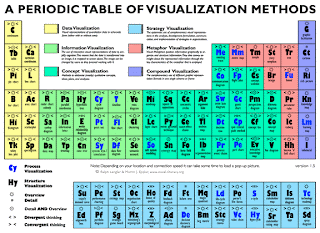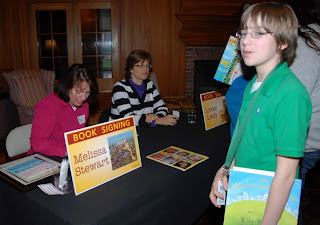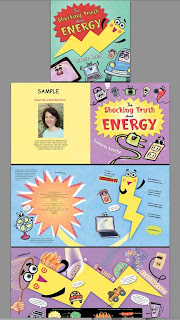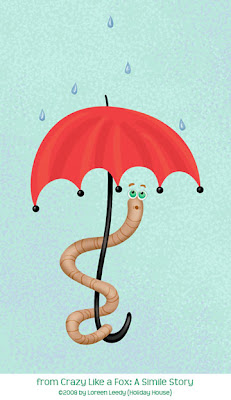
I have enjoyed being a part of the I.N.K. blog since the beginning but am now stepping down to let others have a chance...while I will no longer be a regular monthly blogger, an article by me will be popping up from time to time. Here is my repost from April 21, 2010:
Tomorrow is the 40th anniversary of Earth Day, so it’s nice to be able to talk about The Shocking Truth about Energy (I just received my copies last week.) The characters include a lightning bolt named Erg and a gaggle of household appliances, toys, and tools. With their help, young readers learn how energy can change into many different forms such as heat, light, or electricity. To begin with, kids find out that their own bodies can convert the energy embedded in fuel (food) into motion via muscle power.
Blog: I.N.K.: Interesting Non fiction for Kids (Login to Add to MyJacketFlap)
JacketFlap tags: Gretchen Woelfle, Loreen Leedy, Rosalyn Schanzer, Steve Sheinkin, Add a tag
Blog: I.N.K.: Interesting Non fiction for Kids (Login to Add to MyJacketFlap)
JacketFlap tags: Gretchen Woelfle, Loreen Leedy, Steve Sheinkin, Rosalyn Schanzer, Add a tag
Blog: I.N.K.: Interesting Non fiction for Kids (Login to Add to MyJacketFlap)
JacketFlap tags: writing, Loreen Leedy, Add a tag
 |
| Artist rendering of Milky Way Galaxy, credit NASA/JPL-Caltech |
 |
| Google Image search, click image for results page |
Will there be puppies!?!
 |
| Click image to view more puppies. Note non-puppy stowaway above. |
Does it have anything to do with you?
 |
| Tag Galaxy search on People, click image to visit site |
Blog: I.N.K.: Interesting Non fiction for Kids (Login to Add to MyJacketFlap)
JacketFlap tags: reading, math, Loreen Leedy, Add a tag
 |
| A 2-page spread from Seeing Symmetry ©2012 |
4.G.3 Recognize a line of symmetry for a two-dimensional figure as a line across the figure such that the figure can be folded along the line into matching parts. Identify line-symmetric figures and draw lines of symmetry.
The question of how much to include is always an issue for authors. We do the research, compile a zillion things, and reluctantly pare it all down as much as possible. I did “cheat” a little bit by having a couple of pages of notes in the back. And perhaps a Simple Symmetry book is in my future…wouldn’t want to leave out the little guys!
Getting back to the original complaint, that there is “too much” information in this book, I can see how it might be difficult to get through many nonfiction books that are loaded with factoids. Here is a blog post on the Children’s Books and Reading blog that has a good approach using sentence starter cards to help kids process the information better… Non-Fiction Books: Putting Words Into Their Mouths. In short, the adult makes cards with phrases such as “I can see…” and “I can hear…” The adult and child take turns pretending to be a person in the book, the idea being to put yourself into the page and take the time to observe what is going on. There is no need to finish the entire book in one sitting, perhaps one page at a time is just right.
If anyone would like further immersion in the wonderful world of symmetry, I have been having a fabulous time compiling all kinds of symmetrical images on Pinterest. Amazingly, over 800 hundred people are following my symmetry board:
Blog: I.N.K.: Interesting Non fiction for Kids (Login to Add to MyJacketFlap)
JacketFlap tags: creativity, writing, art, Loreen Leedy, Add a tag
Greetings, I.N.K. readers! Please help me with a little experiment…do you prefer version 1 or 2?
TIPS:
Resources:
100 Things Every Designer Needs to Know About People by Susan Weinschenk, Ph.D.
I just finished the above two books which is why I’m thinking about this topic (a recurring interest). Also, I’ve really enjoyed looking at Karen Romano Young’s Humanimal Doodles. Anyway, here is the other contender (click to enlarge):
More on infographics from Kathy Schrock’s site.
Written and drawn in Adobe Illustrator
Blog: I.N.K.: Interesting Non fiction for Kids (Login to Add to MyJacketFlap)
JacketFlap tags: picture books, e-books, science, Loreen Leedy, 2011 titles, Add a tag
- Author gets a fabulous idea and writes a manuscript or proposal
- An editor likes it and contract terms are agreed upon
- The ms is revised and edited (repeat as necessary)
- Interior artwork (if applicable) is obtained, plus jacket art
- Book is typeset, printed, bound, sent out into the world
- Marketing happens
- Reviews are written, hopefully rave
- Orders are taken and fulfilled
- Royalties are paid to authors and illustrators
- As stock runs low, the book is reprinted
- When orders decline, the book goes out of print
Right?
Or not so much. Authors have always had the option of reprinting their book themselves. Boxes of books piled in the garage may be the result. Or so I hear, not having tried it myself.
As everyone knows, things are different now because of the devices, digital book formats, and ebookstores now available. For quite awhile I’ve been wanting to put one of my out-of-print titles into ebook form and it's a thrill to announce that Tracks in the Sand is now available again on the iBookstore. Here is the trailer:Tracks originally had two printings and according to an inside source at the time was still selling several thousand copies a year when the publisher decided not to reprint. Perhaps they were more interested in selling their novelization of the Teenage Mutant Ninja Turtles movie? (Just a theory.) My recent thinking is that Tracks is a good candidate for a digital version because, among other factors, sea turtles have been around for over 100 million years. Therefore, the basic facts of their life cycle story are not likely to change in the foreseeable future, barring oil spills and many other threats to their survival. My hope is that this book can now continue to serve as a tool to help young readers learn about these wonderful reptiles.
There are many pros and cons to the various digital options…iPad or Android app? Kindle book? NOOK book? I chose the iBooks format to start with for two main reasons:
- The image quality is excellent.
- There is now an inexpensive iPad app, 5 Comments on The life of a children's book…is it over when it's over?, last added: 10/19/2011
Blog: I.N.K.: Interesting Non fiction for Kids (Login to Add to MyJacketFlap)
JacketFlap tags: math, science, Loreen Leedy, 2012 titles, Add a tag
Okay, so it’s a couple of days early but here’s a question for you:
What do maple leaves, apples, pumpkins, and owls have in common?
Hint: The answer has nothing to do with autumn.
Hint: Think math.
Maybe this coloring page will help:
Maybe this will help:
Okay, so what we’re talking about is...
It’s actually a Spring 2012 book, but the plan is to make more coloring pages throughout the year and besides I’m really excited about this book. I’ve been thinking about how to do this topic for literally years so it’s very satisfying to have sent the final files up to the publisher.
Loreen
Blog: I.N.K.: Interesting Non fiction for Kids (Login to Add to MyJacketFlap)
JacketFlap tags: art, Loreen Leedy, Add a tag
Examples of familiar options such as pie charts and venn diagrams are included, but many of the others aren't as well known (to me, anyway) such as a failure tree, a heaven ‘n’ hell chart, or an argument slide. Naturally, I’m thinking about how one or more of these might work in an informational picture book. Have fun exploring and then creating your own visual communications!
Loreen Leedy
my web site
Blog: I.N.K.: Interesting Non fiction for Kids (Login to Add to MyJacketFlap)
JacketFlap tags: nonfiction writing, e-books, Loreen Leedy, Add a tag
As part of my quest in recent months to get my arms around the changes in publishing due to digital books, I’ve been exploring interactivity. How can it transform the static page of a print book into a place for readers to explore in new ways?
For this example, let’s explore some interactive ideas about lions using the simple ability to Hide or Show an image or text string. In other words, things can appear or disappear when the Reader taps on the screen:
- Pop-up labels to identify body parts
- Show layers under the skin: muscles, skeleton (i.e. the skin and muscle layers vanish as needed)
- A timeline of lion evolution with thumbnail images that can be enlarged
- Images that can zoom way in to show details of eyes, hair, teeth
- A time-lapse sequence of photos of a growing cub
- African map with lion’s range from historic times through today into a projected future
- Switching out altered photos of a white or black lion to demonstrate how real lions blend into their habitat
Though I’m not a classroom teacher, my books certainly seek to inform students so I’m always interested in interesting ideas in education. Recently, I came across a PDF called Interactive Techniques, compiled by Dr. Kevin Yee of the University of Central Florida. There are 182 tips listed, many which could be translatable into an interactive book app. Here are a few:
33. Misconception check: Discover class’s preconceptions...
For a nonfiction ebook, there could be an opening section that explores common myths about the topic. The reader could tap on the text and the myths could melt away like the Wicked Witch of the West, or some other fun effect.
41. Concept mapping: Students write keywords onto sticky notes and then organize them into a flowchart...
How about including a section in the digital book for Readers to move around and organize facts in various ways? They could take a screenshot of their work to save it.
131. Question and Answer Cards: Make index cards for every student in the class; half with questions about class content; half with the right answers. Shuffle the cards
Blog: I.N.K.: Interesting Non fiction for Kids (Login to Add to MyJacketFlap)
JacketFlap tags: e-books, Loreen Leedy, nonfiction writing, Add a tag
As part of my quest in recent months to get my arms around the changes in publishing due to digital books, I’ve been exploring interactivity. How can it transform the static page of a print book into a place for readers to explore in new ways?
For this example, let’s explore some interactive ideas about lions using the simple ability to Hide or Show an image or text string. In other words, things can appear or disappear when the Reader taps on the screen:
- Pop-up labels to identify body parts
- Show layers under the skin: muscles, skeleton (i.e. the skin and muscle layers vanish as needed)
- A timeline of lion evolution with thumbnail images that can be enlarged
- Images that can zoom way in to show details of eyes, hair, teeth
- A time-lapse sequence of photos of a growing cub
- African map with lion’s range from historic times through today into a projected future
- Switching out altered photos of a white or black lion to demonstrate how real lions blend into their habitat
Though I’m not a classroom teacher, my books certainly seek to inform students so I’m always interested in interesting ideas in education. Recently, I came across a PDF called Interactive Techniques, compiled by Dr. Kevin Yee of the University of Central Florida. There are 182 tips listed, many which could be translatable into an interactive book app. Here are a few:
33. Misconception check: Discover class’s preconceptions...
For a nonfiction ebook, there could be an opening section that explores common myths about the topic. The reader could tap on the text and the myths could melt away like the Wicked Witch of the West, or some other fun effect.
41. Concept mapping: Students write keywords onto sticky notes and then organize them into a flowchart...
How about including a section in the digital book for Readers to move around and organize facts in various ways? They could take a screenshot of their work to save it.
131. Question and Answer Cards: Make index cards for every student in the class; half with questions about class content; half wit
Blog: I.N.K.: Interesting Non fiction for Kids (Login to Add to MyJacketFlap)
JacketFlap tags: Loreen Leedy, marketing books, Add a tag
I haven’t appeared at very many book festivals, but attended two in the last couple of weeks. The first one came about because of a Facebook connection, associate professor Ernie Bond, who sent me an invite to the Children’s Literature Festival at Salisbury University, which is held every spring. By coincidence, I was going to be in town visiting relatives at the exact time, so sent him a message that I would drop by. One of the main reasons was that two I.N.K. bloggers would be there, Melissa Stewart and Sneed Collard lll. Then Ernie replied that he would have some of my books ordered for me to sign(!)
Well sure, I’m always happy to sign books and was impressed that some were available with only a couple of weeks notice, plus people brought books in from their library or personal collections. And though Sneed hadn’t arrived yet I was fortunate to be able to chat with Melissa who gave me some great tips about her Skype school visits, something I’d like to try now that my iPad 2 has arrived. Her Readers’ Theater scripts and other activities on her web site have also been inspiring.Speaking of my iPad, I’ve had it a little over a week and used it to film, edit, and upload the video below, taken at the UCF Book Festival last Saturday:
<p><br><br>By</p>
It’s another amazing coincidence that I write and illustrate books, and my brother Robert sells them... pretty cool! His store, Leedy’s Books, is in Orlando, so this festival is a great way for people to find out about his bookstore (he carries primarily used books). The University of Central Florida started their book festival last year and did a great job organizing it, but this year was even better. My only complaint is that it can be very tough for mere authors and books to compete against blue-eyed miniature horses in costume!!!
Not one, not two, but THREE adorable tiny horses (two with blue eyes) were in the booth next to me when I was signing. Needless to say, most of the books were signed at other times throughout the day in Robert’s booth. There were plenty of other fun distractions like a zillion characters in Star Wars costumes, which all added to the fun. Eve
Blog: I.N.K.: Interesting Non fiction for Kids (Login to Add to MyJacketFlap)
JacketFlap tags: picture books, e-books, Loreen Leedy, Add a tag
In last month’s post I sought to summarize many of the issues authors and illustrators face when putting their work into digital form. One goal for many of us is to bring new life to our out-of-print (OP) titles. It’s a costly and logistically-complex undertaking to have a book reprinted (cardboard boxes filling the garage comes to mind.) But an ebook? Seems much more feasible. Choosing which format and ebookstore to focus on is harder than it might seem at first. As a picture book creator, the need for full-bleed images eliminates some contenders such as the Amazon Kindle.
Let’s start with the easiest format, Adobe PDF. The good news is the original picture book can be made into a PDF that looks basically the same, even including double-page spreads. To the left is a screen shot of test PDF I made the other day of The Shocking Truth about Energy (which is in print, just to clarify.) The front jacket and an “about the author page” were added to the beginning. My understanding is that Follett Library Services is selling PDFs of trade children’s books…more info about that plus how the PDF was made is here.
The bad news is that PDFs like this must be viewed on a fairly big screen on a desktop computer or the reader would have to do a lot of scrolling and zooming. It would be better if each page could be viewed singly, but as you can see with the lightning bolt image, the spreads in this book are often continuous and won’t work as single pages. This issue affects most of my books, where some images fit on single pages and some run across both. Who knew this would ever be an issue?
And what if people want to buy the ebook for a tablet ereader such as the iPad or NOOKcolor?
Blog: I.N.K.: Interesting Non fiction for Kids (Login to Add to MyJacketFlap)
JacketFlap tags: nonfiction, Loreen Leedy, Add a tag
- imagination
- multi-tasking
- big picture
- intuitive
- believes
- impulsive
- timeless
- visual
- facts
- step-by-step
- details
- logical
- knows
- plans
- on time
- verbal
Blog: I.N.K.: Interesting Non fiction for Kids (Login to Add to MyJacketFlap)
JacketFlap tags: Susan E. Goodman, Vicki Cobb, Gretchen Woelfle, Loreen Leedy, Rosalyn Schanzer, Add a tag
Susan Goodman is delighted that her book, The First Step, is going to be published by Farrar, Straus and Giroux and will be illustrated by E.B. Lewis.
Loreen Leedy will participate in a panel discussion and reception on Friday, December 3 from 5:00 pm to 8:00 pm at the Art Institute of Fort Lauderdale for the exhibit The Storymaker's Art. Work from eight Florida illustrators will be included in the show. http://www.thestorymakersart.com/
Gretchen Woelfle will be traveling with novelist Carolyn Marsden to West Africa (via Paris!) to give author talks at international schools in Bamako, Mali; Ouagadougou, Burkina Faso; and Dakar, Senegal. Watch for a full report in December.
Vicki Cobb and Rosalyn Schanzer will be presenting jointly at the Science Teachers Association of Ontario (STAO) conference at 11/11 11 am via videoconferencing. Vicki also has an article in the November Booklistonline Quick Tips called "Nonfiction Books and the Joy of Learning" where she promotes our blog.
Blog: I.N.K.: Interesting Non fiction for Kids (Login to Add to MyJacketFlap)
JacketFlap tags: technology, Loreen Leedy, Add a tag
Blog: I.N.K.: Interesting Non fiction for Kids (Login to Add to MyJacketFlap)
JacketFlap tags: Jan Greenberg, Susan E. Goodman, Vicki Cobb, Gretchen Woelfle, Tanya Lee Stone, Loreen Leedy, Deborah Heiligman, Add a tag
Follow the Money by Loreen Leedy is being used in Vermont's statewide
financial literacy program.
http://bit.ly/bHwSTs
Artwork from several of Loreen Leedy's picture books will be included
in The Storymaker's Art, and exhibit of illustrations by eight artists
at the Art Institute of Fort Lauderdale.
http://www.thestorymakersart.com/
Gretchen Woelfle will be on hand to sign books at Breakfast With the Authors, sponsored by the Santa Barbara County Education Office on October 9, in Santa Barbara, CA.
From Susan E. Goodman: My new Step into Reading book, Monster Trucks!, was just published September 28th by Random House. For my other writing news, check my blog post this month, on October 11th. Other news that doesn't really belong here...I'm going to Paris this month for two weeks!
Deborah Heiligman will be speaking at the Rutgers One on One Plus Conference, October 16. http://www.ruccl.org/One-on-One_Plus_Conference.html
and at the New York State English Teachers Conference October 21-22.
From Jan Greenberg: Thanks to Steve at WindingOak, my new website is launched. Please check it out. Jangreenbergsandrajordan.com October 1 and 3, the St. Louis Symphony Orchestra is performing Appalachian Spring with images from my new book Ballet for Martha: Making Appalachian Spring. My co-author Sandra Jordan, the illustrator Brian Floca, and editor Neal Porter are coming in and we are doing a panel discussion for the St. Louis Public Library on Saturday, October 2. A narration of the book with images and music will be performed by the St. Louis Symphony on November 10 and 16 for the Young People's Concerts.
Now Available
href="http://1.bp.blogspot.com/_g-Bp2wiurbI/TKiMXtWg5yI/AAAAAAAAAqQ/AUn40S4uG-s/s1600/martha.jpg">

Tanya Lee Stone's newest nonfiction book, The Good, the Bad, and the Barbie will launch soon and its first two reviews are both Stars! School Library Journal wrote, "The author maintains her signature research style and accessible informational voice." Kirkus: "Sibert Medalist Stone tantalizes." The Good, the Bad, and the Barbie is part biography--both of the doll and of her inventor, Ruth Handler--and part exploration of the cultural phenomenon that is Barbie.

Blog: the dust of everyday life (Login to Add to MyJacketFlap)
JacketFlap tags: UMBRELLA, Loreen Leedy, THEMED ART, Add a tag
...a worm in the rain!
At the end of Crazy Like a Fox: A Simile Story, readers are encouraged to invent their own similes. For more info about the book, click here. Or, you can watch a video trailer here.
Blog: I.N.K.: Interesting Non fiction for Kids (Login to Add to MyJacketFlap)
JacketFlap tags: Writing, research, Loreen Leedy, Add a tag
Originally posted on May 21, 2008 Every author encounters facts that shift over time, from expected changes such as a new President to the unprecedented landing of an alien spacecraft on the White House lawn (theoretically.)When you least expect it, carefully researched details or large chunks of a book can be rendered obsolete overnight. As an example of the latter, remember when this graphic was ubiquitous on cereal boxes and school cafeteria walls across the U.S.?
Every author encounters facts that shift over time, from expected changes such as a new President to the unprecedented landing of an alien spacecraft on the White House lawn (theoretically.)When you least expect it, carefully researched details or large chunks of a book can be rendered obsolete overnight. As an example of the latter, remember when this graphic was ubiquitous on cereal boxes and school cafeteria walls across the U.S.?
In 1994 I had based a book on the USDA Food Pyramid, The Edible Pyramid: Good Eating Every Day, so it was a bit of a hassle when the USDA updated the program some ten years later, however welcome the changes were. Since the point of the book is to explore the foods found within the various sections of the pyramid, the graphic was on most spreads. It's usually a fairly easy matter to update a book’s text, but artwork is another story.Fortunately we illustrators now have software such as Adobe Photoshop to assist in this task. The original illustrations were hand painted
Since the point of the book is to explore the foods found within the various sections of the pyramid, the graphic was on most spreads. It's usually a fairly easy matter to update a book’s text, but artwork is another story.Fortunately we illustrators now have software such as Adobe Photoshop to assist in this task. The original illustrations were hand painted
Blog: I.N.K.: Interesting Non fiction for Kids (Login to Add to MyJacketFlap)
JacketFlap tags: Loreen Leedy, Science in the Classroom, Add a tag
The ongoing catastrophe happening in the Gulf of Mexico isn’t nearly over yet and its effects will be with us for the rest of our lives. It’s difficult for adults to grapple with it... personally I cannot bear to watch or even listen to news stories about the many animals that have been soaked with petroleum. So how do we discuss it with children?
The National Wildlife Federation web site has a page where Ranger Rick answers kids’ questions about The Big Oil Spill. For parents and teachers, another article on the site has many good tips. They include how to talk with kids of varying ages and stay as positive as possible (e.g. about how people are working hard to shut down the leak, contain the spill, clean up beaches, and help wildlife.) An excellent suggestion is to foster children’s love of nature by taking them to parks and other natural areas. The NWF has a special web site called Be Out There devoted to that goal.
Tri-State Bird Rescue & Research is in the forefront of the response on behalf of wildlife. This page shows before and after pictures of an oily pelican that was cleaned up. I can personally attest that the process works—in the early 1980s before moving to Florida, I volunteered for a short time at Tri-State which is located in Newark, Delaware. It was a little tricky hanging onto an oil-slicked goose long enough to wash it, but with plenty of hands around the washtub, we managed. There were other stories, such as having to use the bathroom while a hawk perched on the shower curtain rod above. Solution? I held a trash can lid over my head in case he felt like taking an unscheduled flight. Looking at the photograph of the current facility, it looks like they’ve come a long way since those early days.
The National Oceanic and Atmospheric Administration has a multi-page story on its site about the Exxon Valdez spill in Prince William Sound that summarizes the spill, recovery efforts, and the extent of the area’s recovery. They need to update one fact on the site, though...the 1989 disaster is no longer the largest oil spill to occur in U.S. waters. Their FAQ page includes how spills spread, information about dispersants, how oil spills in rivers are different than those in the ocean, and science fair ideas on related topics.
2 Comments on Kids and the oil spill, last added: 6/16/2010
Blog: I.N.K.: Interesting Non fiction for Kids (Login to Add to MyJacketFlap)
JacketFlap tags: Writing, Loreen Leedy, Add a tag
Or perhaps some of the list below exist already and I just haven’t heard of them yet? (In this ever-changing digital/virtual world, I try not to assume that a particular tool hasn’t already been created.) We authors already compile software packages and bookmarks of web sites that help us do our jobs more efficiently, custom-tailored to our interest areas or current projects.
For example, lately I've been needing some Internet-related terminology and have been using NetLingo, which has several interesting options for finding terms and acronyms. Have you ever heard of a synthespian? How about a metoobie? How about a square-headed spouse? If not, browse awhile or subscribe to their word of the day and you may find yourself joining a collaboratory.
So here is my wish list, and if any of these already exists, by all means let me know.
The Readerator: Submit your latest draft to this online system and receive quick feedback on its quality including uniqueness, objectivity, accuracy, organization, flow, pacing, humor, and whatever other qualities you specify. 100% confidentiality is guaranteed. Of highest importance is the tactfulness of the Readerator’s response, naturally.
Word Volunteer: This on-the-fly handy feature in your word processor suggests alternatives to overly used words in your manuscript. “Pardon the interruption, but you’ve used confuse twice already. Would you like to substitute baffle, perplex, or flummox?
Pubalyzer: This handy service reads all existing works on your topic so you can avoid duplicating the angle of already-existing books, ebooks, etc. Reading level, type of illustrations (if any), sales figures, awards won, and many other aspects would be included.
The Anachronixer: With this technology, you can avoid mentioning a song from 1962 in a story set in 1961 and other temporal glitches.
The Deflattener: This search feature finds dull passages so you can liven them up with your preferred method.
3 Comments on Future Writing Tools, last added: 5/20/2010





















You all look to be having fun at ALA. Enjoy.
What fun! Lookin' good, everyone!
The best part - lots of interest in what we're doing. So I'm passing on the message: "Keep it coming!"
Wonderful to see so many iNK writers at ALA. Way to go!!!
Thanks so much, Gretchen…love those Holiday House receptions!
Plenty of talk at ALA about the CC standards and the increased nonfiction reading requirement!
It was really fun to meet you there and to ride in your chariot, Gretchen. Thanks for this show and tell!
It was really fun to meet you there and to ride in your chariot, Gretchen. Thanks for this show and tell!